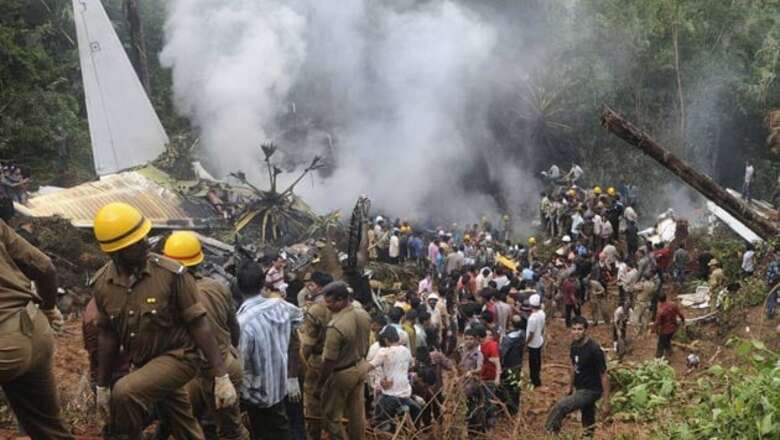
views
New Delhi: In the aftermath of the Mangalore air crash, aviation regulator DGCA has issued a fresh directive to all airlines re-defining "correct landing" procedures and to ensure that a senior cabin crew is present in the cockpit in case one of the pilots has to go out.
The directive came in the backdrop of the crash which claimed 158 lives and another incident in which an Air India Express plane from Dubai to Pune, with 118 persons on board, plunged a few thousand feet after hitting an air pocket.
At that time, the commander had gone to the toilet after putting the plane on auto-pilot mode and the co-pilot blanked out as the aircraft dived over 6,000 feet.
The fresh directives, issued by the Directorate General of Civil Aviation (DGCA) reiterating the Standard Operating Procedures (SOPs), asked airlines, non-scheduled and general aviation operators to "ensure that 'correct' landings are aimed by pilots rather than achieving soft landings at lower 'G' (gravity) values that may compromise the runway stopping distance required".
In case of an "unstabilised approach" if not timely corrected, the pilots should make a 'go-around' so that they get another opportunity to conduct a safe approach, it said.
As per preliminary investigations, the Mangalore crash occurred after the plane reportedly missed the touchdown point, an area of about 500 feet, on the runway.
As a large percentage of incidents and accidents occurred during approach, landing or take off phases of a flight when the pilots generally operate on manual flight mode, the DGCA said "it is critical that SOPs are followed meticulously in these phases of flight".
"Pilots need to bear in mind that a good landing is the result of a good approach which is built on adherence to SOPs. A good landing is not one that the passengers perceive as a soft landing, but one that is made at the correct point on the runway with the correct flight parameters," it said.
The regulator warned that a soft landing could result in a delayed touchdown which would need "harsh" deceleration in speed to maintain the aircraft on the runway or "even worse a runway excursion with possible catastrophic results".
On manning of the cockpit at all times during flight, the DGCA directive reiterated this as mandatory and said in case one of the crew members has to leave the cockpit during the non-critical phases of flight, the cabin crew is required to be inside the cockpit and occupy the observer seat but not those meant for the pilots.
"The cabin crew in the flight deck will remain vigilant in case of subtle incapacitation of the flight deck crew or any other situation that requires assistance," the DGCA said.
It said the cabin crew would remain in the flight deck till such time the flight deck crew member returns to the deck, it said and called for "strict compliance" of the fresh directive.
(With inputs from Agencies)

















Comments
0 comment